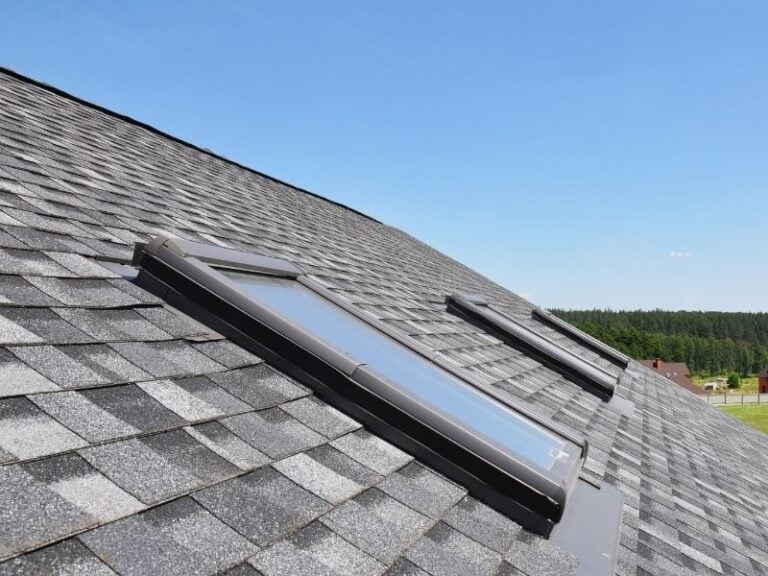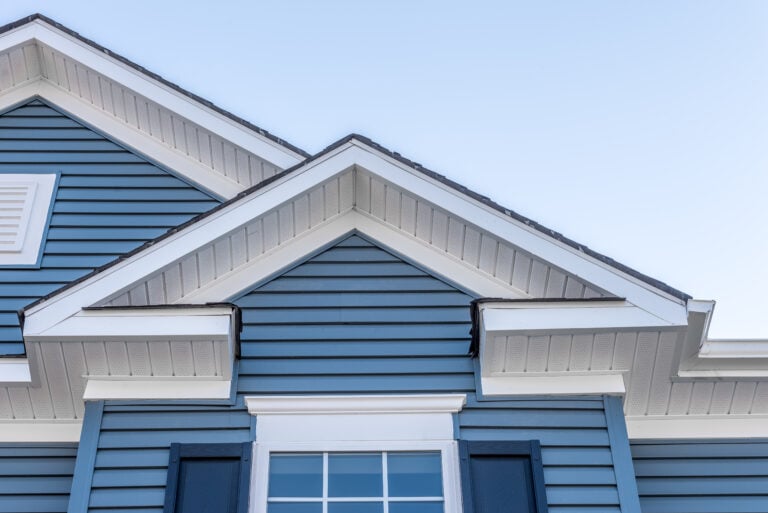Your roof, a silent sentry against the elements, plays a pivotal role in protecting your most significant investment in your home. We often take it for granted, only giving it a second thought when a leak appears or a storm rages. But what if you could be proactive and save yourself from a costly, stressful emergency? Understanding the signs of a declining roof is crucial for preventing disaster and maintaining your home’s value.
This ultimate checklist will guide you through the process, helping you determine whether your roof is nearing the end of its life, and providing clarity on the key question: is it time to replace your roof?

Key Takeaways
- Age is a primary indicator. Most asphalt shingle roofs last 20-25 years.
- Visible damage like cracked or curled shingles, bald spots, and granules in gutters are clear warning signs.
- Interior signs, such as water stains on ceilings or peeling paint, can point to a failing roof.
- A professional inspection from an experienced roofing contractor is the most reliable way to assess your roof’s condition.
Overview
A roof’s lifespan depends on a variety of factors, including the material, weather conditions, and quality of installation. While a roof might appear fine from a distance, close inspection can reveal critical issues. Signs such as cracked shingles, missing granules, or water damage on the interior of your home indicate a need for a professional evaluation. Proactive replacement can save homeowners from extensive damage and higher costs in the long run.
The Ultimate Roofing Checklist: Your Step-by-Step Guide
Here is a straightforward checklist to help you evaluate your roof’s condition. Go through each point to get a comprehensive understanding of what’s happening up there.
1. Age of the Roof:
- Is your roof over 20 years old?
- Do you know the exact year it was installed? (If not, a quick check of home inspection reports or purchase documents may provide this information.)
2. Visual Inspection (From the Ground):
- Are any shingles curled, cracked, or buckling?
- Are there any “bald spots” where the protective granules have worn away?
- Can you see any missing shingles?
- Do you see any visible streaks, discoloration, or signs of algae growth?
3. Gutter and Downspout Check:
- Are your gutters filled with a significant amount of shingle granules?
- Have you found small pieces of asphalt or other roofing materials in your gutters or on the ground?
4. Interior Check (Attic and Ceilings):
- Do you see any water stains or streaks on your ceiling or walls?
- Is there any peeling paint on the walls or ceiling?
- Do you notice a musty or damp smell, especially in the attic?
- Is the attic insulation damp or matted down?
5. Energy Bills:
- Have your heating or cooling bills increased without a clear reason? (A failing roof can compromise your home’s insulation.)
If you answered “yes” to several of these questions, it’s a strong indication that your roof is compromised and needs attention from a professional. This simple process can help you determine how often should a roof be replaced.
The Age-Old Question: How Long Does a Roof Last?
One of the most straightforward ways to gauge your roof’s health is by its age. A typical asphalt shingle roof has a life expectancy of 20 to 25 years. However, this is not a hard-and-fast rule. A roof in a region with severe weather, like hailstorms or intense sun exposure, may deteriorate faster.
Conversely, a roof in a mild climate might exceed this average lifespan. You should also consider the age of the materials themselves. If your home was built 25 years ago, it is highly likely that the original roof is nearing its expiration date. This is why knowing how often should a roof be replaced is so important. When you’re in doubt about your roof’s age, reviewing old home inspection reports or a building permit can often provide the answer. Even if your roof is not showing obvious signs of wear, its age alone can be a compelling reason for a thorough inspection.
The Cracks and Curls: Visible Signs of Wear and Tear
Your roof communicates its condition through a variety of visual cues. Get a pair of binoculars and examine your roof from the ground. Are the shingles curling upward at the edges or cupping in the middle?
This is a common sign of a roof that is dried out and losing its protective properties. Look for cracked shingles, which often result from wind damage or simple aging. Another telltale sign is bald spots where the protective granules have worn away, exposing the asphalt layer underneath. These granules serve a vital purpose—they shield the roof from the sun’s UV rays and protect the integrity of the shingles. If you find an abundance of these granules in your gutters or at the bottom of your downspouts, it’s a significant indicator that your roof is nearing the end of its functional life.
These physical signs are direct indicators that your roof is no longer providing adequate protection.
A Stained Ceiling: Interior Clues to a Failing Roof
Sometimes the most telling signs of roof problems are not on the roof itself but inside your home. Take a good look at your ceilings and walls, particularly in the attic or top floor. Any discoloration, water spots, or peeling paint can be a direct result of a leak. Water can seep through small cracks in the roof and travel along rafters until it finds an entry point into your living space.
Another less obvious sign is a musty or damp smell. This can indicate mold or mildew growth in your attic or crawl space, which is often a result of chronic moisture accumulation from a persistent roof leak. While a small leak might seem minor, it can lead to extensive damage to your home’s structure, insulation, and even pose health risks. Addressing these interior signs is paramount, and a qualified professional should evaluate your roof to identify the source of the problem.
What a Professional Can Tell You: Beyond the DIY Inspection
While a visual inspection from the ground can provide valuable clues, a homeowner’s assessment is no substitute for a professional evaluation. An experienced roofing contractor has the knowledge and tools to identify problems that are not visible to the untrained eye. They can spot subtle issues like lifted flashings, damaged vents, or small areas of rot. They can also provide a detailed report on the condition of your roof, including its remaining lifespan and any immediate repair needs.
When you are asking yourself how often should a roof be replaced, a professional can give you a concrete answer based on their expert assessment of your roof’s specific condition and materials. This is an important step in making a well-informed decision about your home.
The Dangers of Delay: Why Acting Now Saves Money Later
Procrastinating on a roof replacement can be a costly mistake. A seemingly small leak can grow, causing significant damage to the insulation, drywall, and structural components of your home. What could have been a straightforward roof replacement can escalate into a project that includes extensive interior and structural repairs, substantially increasing the final cost.
Moreover, a compromised roof can lead to higher energy bills as air escapes through gaps and cracks. Delaying a roof replacement can also be a safety hazard, particularly in regions prone to severe weather. A failing roof is much more likely to sustain catastrophic damage during a storm, leaving your home and family vulnerable. Acting proactively is a financially wise and responsible choice that protects both your property and peace of mind.

How Often Should a Roof Be Replaced? Let Our Experts Show You the Way.
Still wondering how often should a roof be replaced? Don’t let uncertainty lead to costly damage. When it comes to the safety and longevity of your home, trusting a professional is the smartest step.
At Kornerstone Roofing, we possess the knowledge and skills to provide a thorough, honest assessment of your roof. We will provide you with a detailed report and clear recommendations, helping you make the right choice for your home and budget. Our team is ready to serve you from our location at 15 Wood Rd Unit 100, Round Lake, NY 12151. Give us a call at (518) 707-1795 to schedule a free inspection and discover the peace of mind that comes with a secure roof.
Conclusion
Your home’s roof is a critical component of its structural integrity and value. Paying attention to its condition, from visible cues like curled shingles to interior signs like water stains, is the first step toward preventing major issues. While a DIY check can be a helpful starting point, a professional assessment is the only way to get a complete picture.
Remember that ignoring these signs will only lead to greater problems and expenses down the line. By being proactive, you can protect your home, save money, and gain peace of mind. How much more value could your home hold with a brand-new, secure roof overhead?
FAQs
Q: How do I know if my roof needs to be replaced?
A: Common signs include shingles that are cracked, curling, or missing granules; water stains on your ceiling or walls; or a roof that is over 20 years old. A professional inspection can confirm the need for replacement.
Q: What is the average lifespan of a roof?
A: The lifespan of a roof varies by material. A typical asphalt shingle roof generally lasts between 20 and 25 years. Other materials like metal or tile can last much longer.
Q: Can I just repair my roof instead of replacing it?
A: Minor leaks or damage can often be repaired. However, if your roof is nearing the end of its life, has widespread damage, or is showing multiple signs of failure, a full replacement is often a more cost-effective and safer long-term solution.



